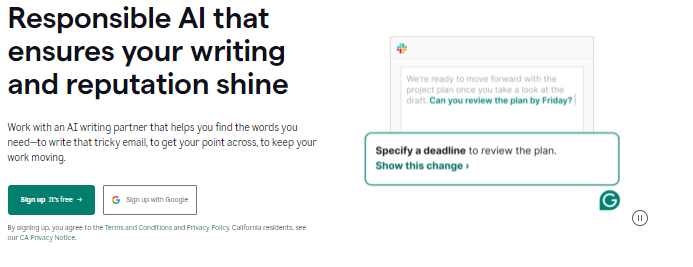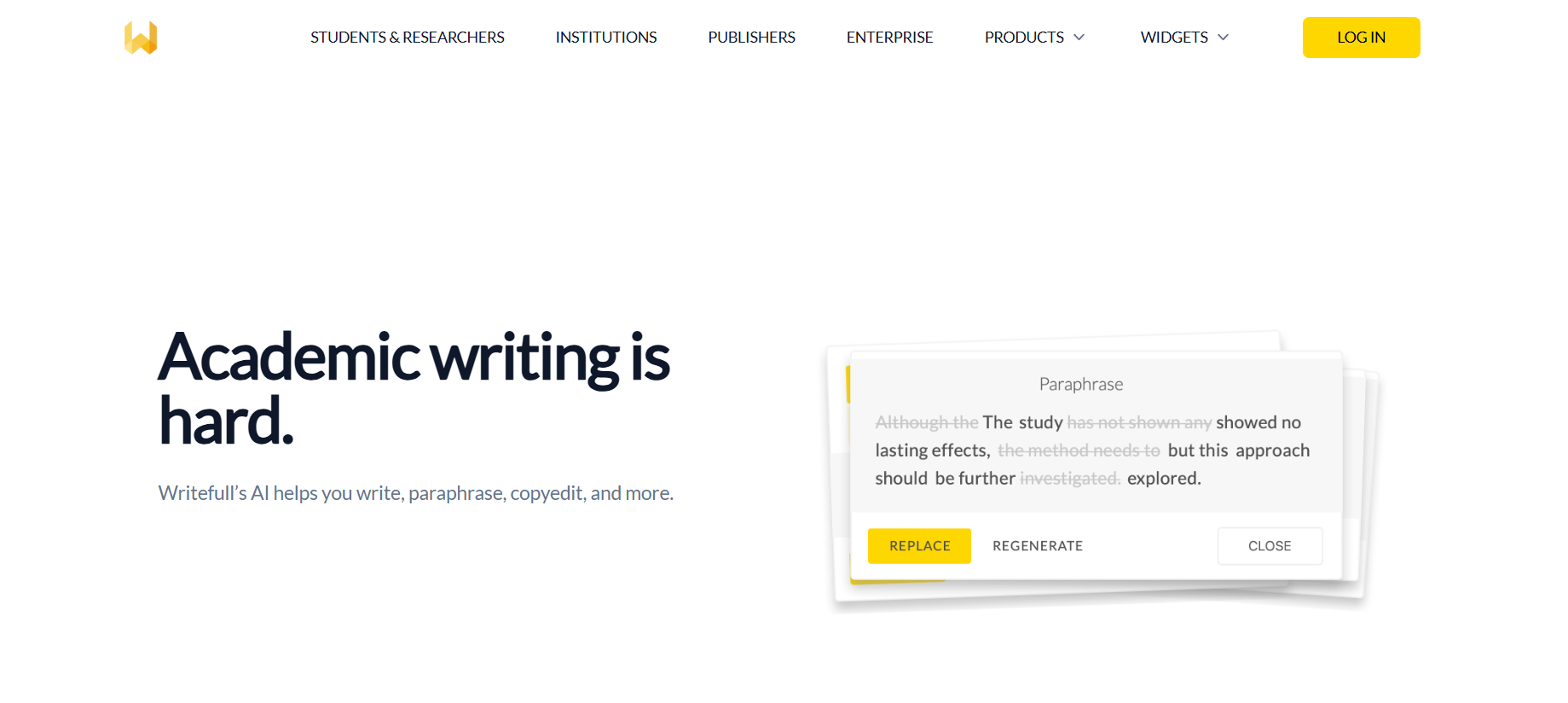Grammarly or Writefull: Which Wins?
Before diving into Grammarly and Writefull, I hopped between tools to catch errors and polish my academic work. Soon, I found each had unique strengths tailored to my writing woes.
Grammarly shines for daily tasks. It spots those pesky, easy-to-miss mistakes in emails and blog posts. It’s part of my routine; I depend on it to keep my writing sharp and mistake-free. I love how it blends into my workflow—whether shooting off a quick email or drafting a blog post. But, I stay cautious. It’s tempting to accept all its tips, but doing so can make my writing lose its personal touch.
Writefull, however, is my pick for academic tasks. Features like the paraphraser and sentence palette are perfect for research papers. The paraphraser helps me avoid repetitive language, keeping my arguments fresh. And the abstract generator? It kickstarts my papers, ensuring I hit all the key points right away.
Choosing between Grammarly and Writefull depends on your writing type. For fast, everyday tasks, Grammarly keeps things clear and professional. For academic writing, especially with complex ideas, Writefull offers tools made for scholarly work. My tip? Think about what you’re writing and pick the tool that fits best.
What is Grammarly?

Grammarly helps fix your writing mistakes, like typos, punctuation, and grammar slips. It’s especially handy if you make small errors often. As you write in other apps, it pops up with suggestions for corrections and style tweaks. It’s great for spotting little errors and can make your writing smoother. But, if you rely too much on its style tips, your writing might lose some of its personal touch.
Help for Various Writers
Grammarly helps beginners or those not confident in their writing. It makes editing easier by spotting mistakes and offering fixes. Even skilled writers appreciate it for finding those rare typos everyone overlooks.
What is Writefull?

Writefull is a smart tool that helps academic writers improve their writing. It has features like a paraphraser, an abstract creator, a title maker, and a sentence palette. If you know how to use these kinds of tools, let’s explore why Writefull is so handy.
Key Features Described
-Rewording Tool: This tool helps you say things differently. It’s useful if you’re repeating yourself or need to make tough ideas simpler while keeping the main point.
-Summary Creator: Making a summary takes time. This tool creates a short version of your work fast, hitting all the important points. You can adjust it if needed.
-Title Maker: A good title matters because it’s what people see first. This tool gives you title ideas based on your work. These can inspire you or be used as is.
-Sentence Guide: This tool gives sentence examples to help shape your writing. Whether you need a strong start or links between parts, it offers choices to suit your needs.
Writefull works well with popular writing tools like Microsoft Word and Overleaf. Overleaf is often used for academic work, especially in sciences using LaTeX. With Writefull, you stay in one app. Its tools are right in your document, speeding up your writing.
Feature Comparison
Title Maker and Rewriter
The Title Maker helps me craft engaging titles for my work. I input a draft or main ideas, and it suggests different titles. This saves time and often sparks new ideas, making my work more eye-catching.
The Rewriter, found with a click in the Writefull menu, lets me rephrase sentences without losing meaning. It’s useful for simplifying tough ideas or avoiding repetition. I use it to refine drafts, keeping my wording clear and accessible while staying true to academic standards.
Grammarly
Grammarly isn’t equipped with the academic features Writefull provides, but it’s great for everyday and professional writing. Its main advantage is its strong grammar checks and style tips that you can use on almost any writing platform. I often rely on it for emails or reports where I need to communicate clearly and without mistakes.
Grammarly gives feedback right away, letting me fix mistakes as I write. This is super helpful for keeping my communication professional. Its tips show up in the sidebar of my text editor, whether I’m using Google Docs or writing an email in Outlook.
Usage and Integration
I use Grammarly every day for many writing tasks. It helps with short emails and long reports. Since it works with browsers and text editors, it is always ready to polish my writing.
On the other hand, I save Writefull for academic writing. It works well with LaTeX editors and Microsoft Word. This makes it ideal for research papers or articles for scientific journals.
How To Decide Between The Two?
When you need to choose Grammarly or Writefull, think about your needs and writing situation. Here’s a straightforward comparison to help you pick the right one for you.
Grammarly: Ideal for General Writing Enhancement
I find Grammarly very useful for daily writing tasks. Whether it’s emails, blog posts, or social media updates, it helps me catch those small typos and grammar errors that can sneak in. The real-time feedback while typing is a big help, making sure everything I write is polished and professional. This is especially helpful when I’m multitasking or in a hurry to meet deadlines.
Grammarly also offers style suggestions, which can enhance clarity and keep readers engaged. However, I’ve noticed that if I rely too much on these suggestions, my writing might lose its personal touch. It’s great for making text error-free, but be careful—it might make your style a bit plain if you accept all its suggestions without thinking.
Writefull: Made for Academic Writers
Writefull is a tool I turn to for academic writing. It’s crafted to help with formal tasks like research papers or theses. The paraphraser is a big help when I need to reword ideas while keeping their meaning. This is crucial in academic work to prevent plagiarism and enhance clarity.
When I begin a new paper, the abstract and title generators come in handy. They aid in shaping my research, making sure the main ideas are clear from the start. The sentence palette offers templates that are useful for creating strong beginnings or transitions, which are vital in academic writing.
